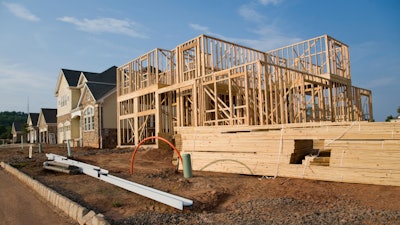
With growth in housing a significant factor driving other aspects of urban development, the inability to meet demand in residential construction activity can have a trickle-down impact on overall construction activity. Unfortunately, a recent report by the Home Builders Institute (HBI), based on research by the National Association of Home Builders (NAHB) Economics Group, shows the lack of skilled construction labor has become a key limiting factor for improving both housing inventory and affordability.
The shortage of skilled labor is one that has been reverberating through the industry. The HBI Fall 2021 Construction Labor Market Report shows the required number of construction workers to keep up with demand to be estimated at approximately 740,000 new hires per year for the next three years.*
According to Ed Brady, HBI president and CEO, the construction industry will need to hire more than 61,000 new workers each month in order to keep up with both industry growth and the loss of workers through retirement or permanently leaving the industry. “From 2022 through 2024, this total represents a need for an additional 2.2 million new hires for construction,” he said. “That’s a staggering number.”
More Demand Than Housing
In the meantime, home sales continue to outpace home construction, resulting in growing backlog and supply chain bottlenecks, the HBI points out. While more than 12 million new households have been formed since the start of 2012, only 10 million new homes for rental or ownership were built during the period.
“The U.S. is experiencing a historically low supply of homes for sale, especially at the lower price points that newly formed households tend to need,” Brady said. "For residential construction to expand and housing affordability to increase, more skilled building trade workers must be recruited and trained for the home building sector.”
Steps to Address Shortage
There are some fundamental steps that home builders and other contractors can take to increase the number of skilled construction trade workers.
Reach out to schools. Brady advises reaching out to secondary school students, and those who influence their decisions, to change their perception of careers in construction. This includes emphasizing the potential for high-paying industry careers.
As the report notes, half of payroll workers in construction earn more than $50,460 annually and the top 25% make at least $71,000. In comparison, the U.S. median wage is $49,150 with the top 25% making at least $67,410.
“One of our most important tasks as an industry is to work with parents, educators and students, as early as the middle school years, to demonstrate that young people can have the promise of great jobs and careers in the trades,” said Brady.
Offer competitive wages. “The construction worker shortage has reached crisis level,” said Brady. “The situation will become more challenging in the coming year when other industries rebound and offer competitive wages and benefits to prospective employees.”
Though not an easy balancing act, Brady suggests increasing worker pay while balancing the need to keep homeownership affordable.
Attract more women. Women currently make up only a slightly growing share of the construction employment, rising slightly to 10.9% in 2020 from 10.3% in 2019, according to the report’s findings. Yet, this is a small segment the total U.S. female labor force. Attracting more women into careers in construction offers opportunities to growth the industry workforce.
Tap into the military. A still largely untapped resource is those emerging from military experience. Brady advises increasing trade skills education for veterans and transitioning military personnel, many of whom already bring with them skill sets readily transferrable to construction.
Open up to immigrants. According to the report, the share of immigrants in construction trades is currently 30%. To build upon this resource, Brady suggests training and placing more minority and lower-income youth and adults for job opportunities, as well as promoting and working toward bipartisan approaches to sensible immigration policies.
Other Key Findings:
- Construction employment currently totals 7.42 million with residential construction representing 3.1 million.
- The number of open construction sector jobs currently averages between 300,000 to 400,000 each month.
- The median age of construction workers is 41. However, due to aging trends, the share of construction workers aged 25 to 54 decreased from 72.2% in 2015 to 69.0% in 2019.
* Based on an analysis of Bureau of Labor Statistics data by the National Association of Home Builders. The estimate was determined by approximating the required net growth in employment due to construction expansion plus the workers required to replace individuals who leave the sector permanently.
Information provided by the Home Builders Institute and edited/enhanced by Becky Schultz.


















